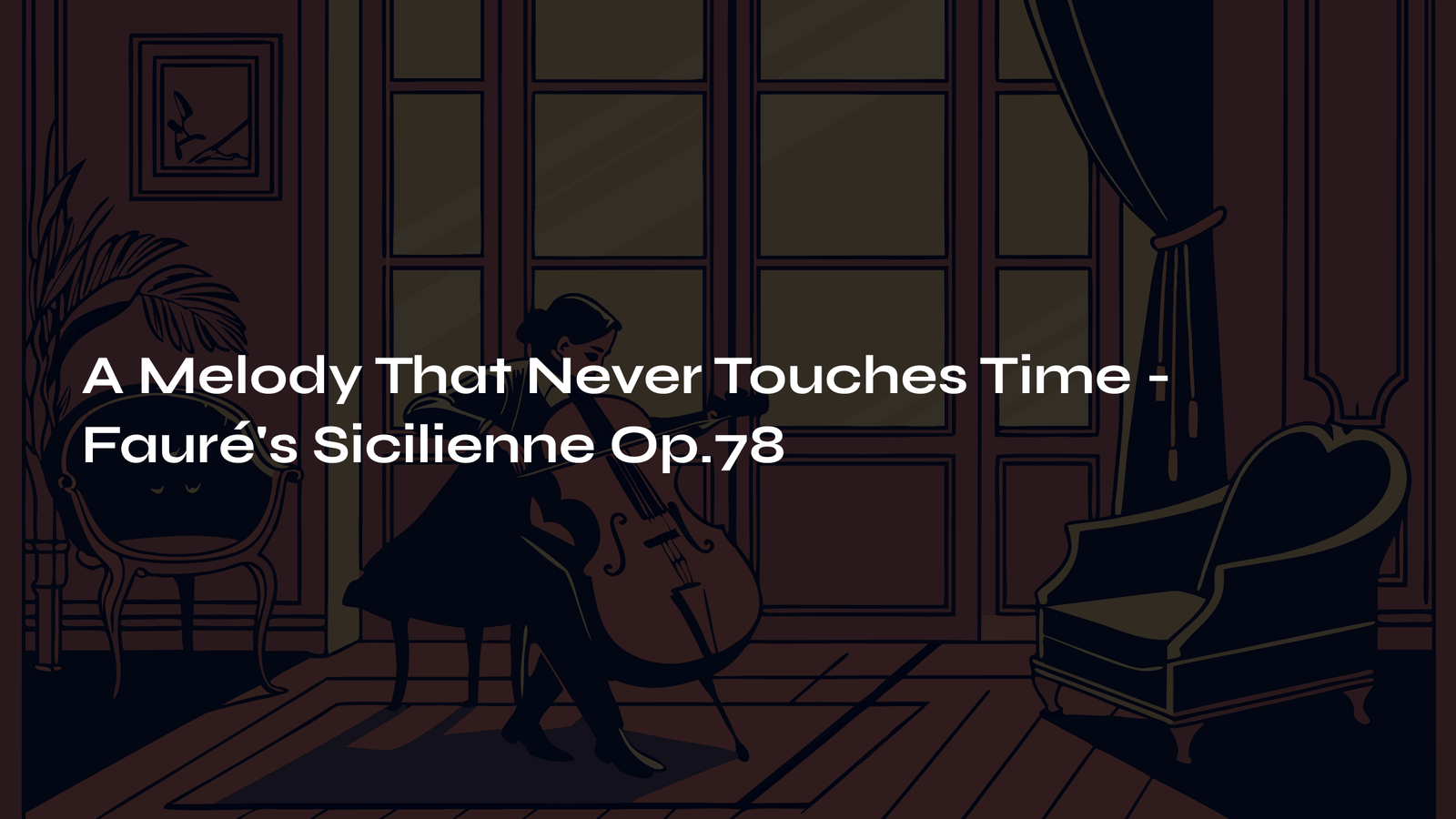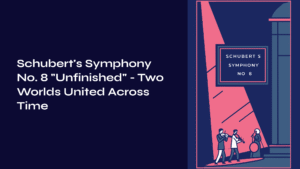Table of Contents

Some Music Stops Time
Have you ever experienced a moment when music makes time stand still? That’s exactly what happened when I first heard Fauré’s Sicilienne. The moment the cello’s opening melody began to flow, it felt as if someone had gently pressed pause on the world’s clock. The melody emerged so naturally that it seemed as though it had always been floating in the air, waiting to be captured.
This piece lasts only about four minutes, yet within those brief moments lies the perfect embodiment of the French elegance and restrained emotion that Fauré pursued throughout his life. It’s neither flashy nor dramatic, but each time I listen, something deep within my heart quietly resonates. This is music that speaks in whispers rather than shouts.

A Masterpiece Born from Abandoned Music
Fauré’s Sicilienne has a fascinating origin story. In 1893, Fauré composed incidental music for Molière’s play “Le Bourgeois gentilhomme,” but when the theater went bankrupt, the production was canceled. The music lay dormant in his drawer for five years.
In 1898, Fauré awakened this sleeping music, rearranging it for cello and piano. Like rediscovering an old letter, this melody emerged from its five-year slumber more mature and profound than before. Dedicated to English cellist W.H. Squire, the work was published simultaneously in London and Paris that same year, and was soon incorporated into his incidental music for Maeterlinck’s “Pelléas et Mélisande.”
Remarkably, this piece continued to transform. In 1909, it was reborn as the opening movement of an orchestral suite, and today it’s performed on various instruments from cello to flute, violin, and even solo guitar. The fact that a single melody continues to be loved in so many forms seems to prove the universal beauty of this work.

The Gentle Waves of 6/8 Time
The sicilienne originally derives from Sicilian folk dance. Its characteristic gentle 6/8 rhythm creates a lilting motion, which Fauré crafted to flow as naturally as ripples on a calm lake.
The main melody, played by the cello, carries the melancholic colors of G minor. Yet this sadness isn’t despairing or heavy, but rather warm and embracing, like the shadows of an autumn afternoon. The melody follows an arch-like structure, slowly ascending then gracefully descending, creating a movement that feels like a deep sigh or someone quietly telling a story.
The piano accompaniment consists of arpeggios and soft harmonies that support the cello’s melody without ever feeling heavy. It’s as if the piano nods in understanding while the cello speaks. This transparent, restrained accompaniment represents one of the greatest charms of Fauré’s music.
The form is a simple ternary structure, yet the subtle harmonic changes and melodic variations within are remarkable. Even when the same melody repeats, it seems to appear each time wearing slightly different clothes.

The Moment It Touched My Heart
Every time I hear this piece, a particular scene comes to mind: sitting by a window on a late afternoon, sipping warm tea while gazing outside. It’s the feeling of those ordinary yet precious moments in daily life, where nothing particularly dramatic happens.
Fauré’s Sicilienne contains no explosive emotions or dramatic climaxes. Instead, it maintains a consistent temperature from beginning to end, quietly caressing our hearts. Listening to such music reveals that sometimes a whisper touches the soul more deeply than a shout.
The warmth of the cello’s timbre is particularly striking. Neither the brilliance of the violin nor the versatility of the piano, but that uniquely human voice of the cello perfectly matches this piece. There’s an intimacy here, like an old friend casually sharing a story.

Small Tips for Deeper Listening
If you want to appreciate this piece more deeply, focus on a few key points.
First, listen carefully to the piano’s accompaniment patterns. Though they appear simple, the movement of the inner voices hidden within is truly beautiful. When the cello plays the main melody, follow how the piano’s left hand draws its bass line, and you’ll sense how the two instruments engage in conversation.
Comparing different instrumental arrangements offers an intriguing experience. The flute version provides a clearer, more transparent feeling, while the violin version offers something more lyrical. By comparing how different instruments express the same melody, you’ll feel the universal beauty of this melody even more deeply.
I also recommend repeated listening. This piece reveals its true value more through multiple hearings than a single encounter. You’ll discover that what initially seemed like a simple melody shows new nuances with each listening.

How Melody Conquers Time
Listening to Fauré’s Sicilienne makes me reflect on the power of truly beautiful music. More than 130 years have passed since this piece was composed, yet its melody still moves our hearts. Even as eras change and tastes evolve, certain music possesses the power to transcend time and touch people’s souls.
Fauré himself modestly described this piece as merely a “pretty thing.” But sometimes true masterpieces emerge where composers least expect them. Through the sincerity contained within its simplicity, the Sicilienne continues to receive love from music enthusiasts worldwide.
The message conveyed by this small four-minute piece is surprisingly large. It quietly proves that music need not always be grand or complex, and that simplicity expressed with genuine feeling sometimes holds the greatest power.
Next time you need a quiet moment, put on Fauré’s Sicilienne. Its gentle melody will gift your heart a small comma of rest. And in that moment, time will pause briefly, and you’ll experience a small miracle where only music exists.

Next Destination: Piazzolla’s “Oblivion”
If your heart has been sufficiently nourished by Fauré’s restrained French elegance, it’s time to journey to a completely different world. Astor Piazzolla’s “Oblivion” presents a world diametrically opposite to the Sicilienne.
If Fauré’s Sicilienne is a conversation in a quiet afternoon café, Piazzolla’s Oblivion is a passionate encounter on the streets of Buenos Aires at midnight. One gently caresses memory, while the other makes you throw yourself into oblivion.
Where Fauré stopped time, Piazzolla twists and distorts it, dragging us into an entirely new dimension. This work, which places tango’s passion atop classical structure, perfectly demonstrates how tradition and innovation can become one.
Both pieces share the commonality of containing complete worlds within approximately four minutes, yet the temperature and color of those worlds are completely different. The journey from Fauré to Piazzolla would be like teleporting from a Parisian salon to a Buenos Aires milonga.



